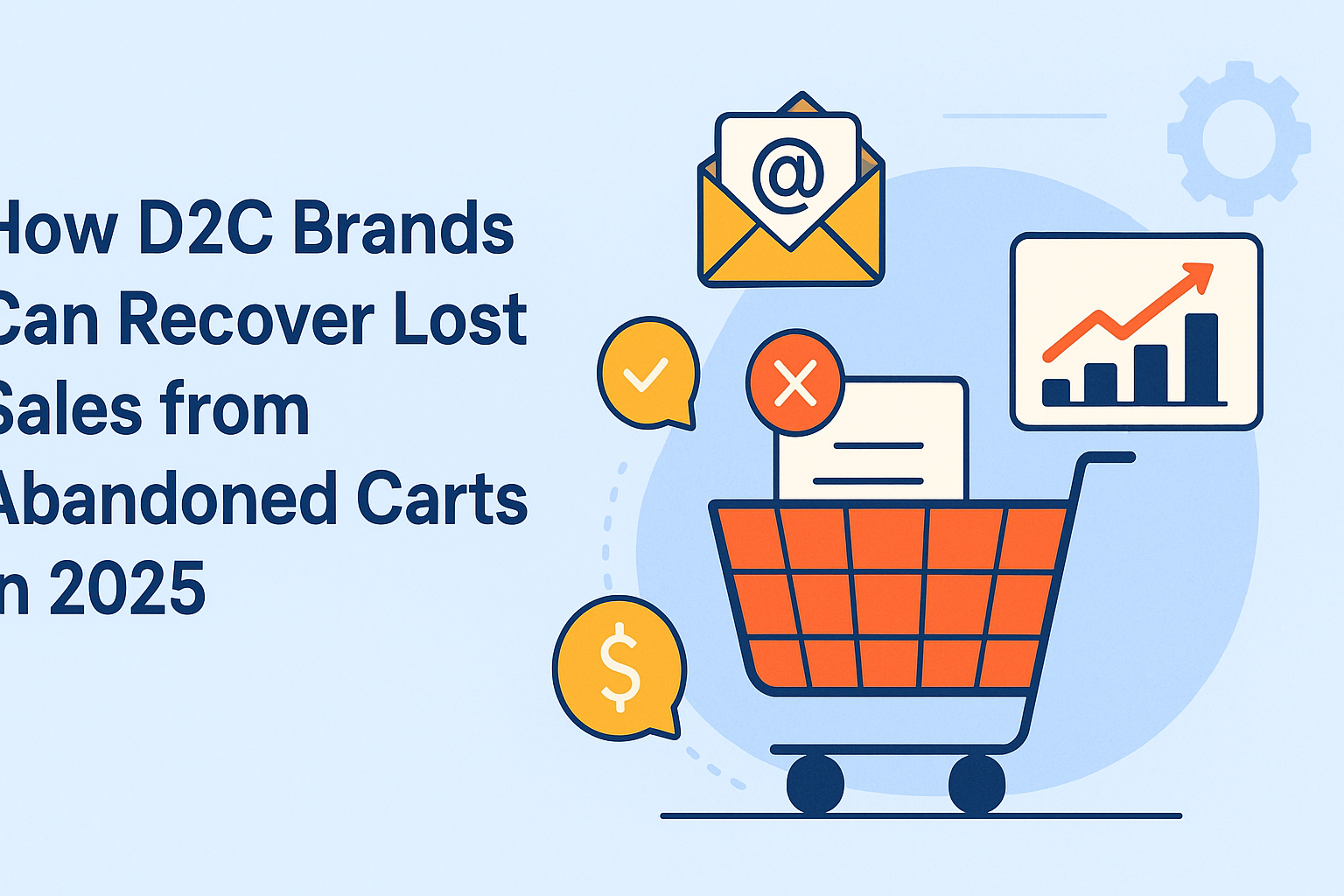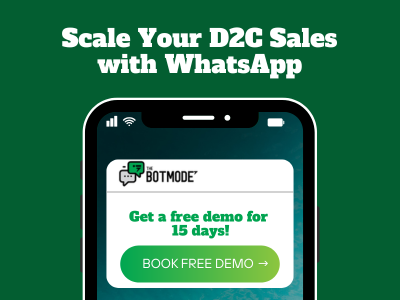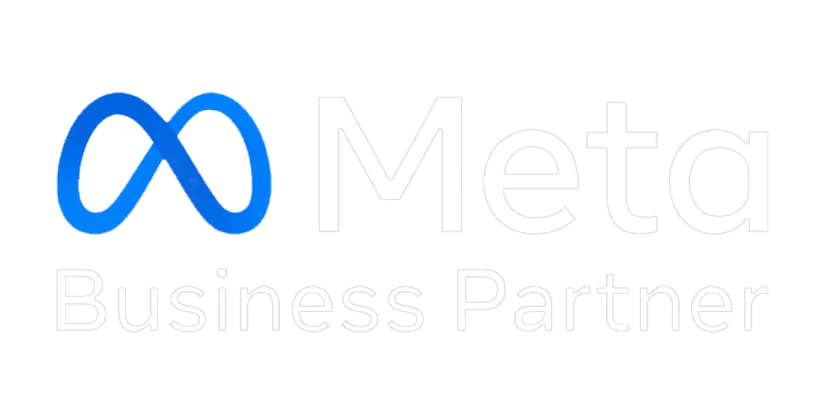How D2C Brands Can Recover Lost Sales from Abandoned Carts in 2025
Introduction
Cart abandonment is a persistent issue plaguing D2C brands. In 2025, with consumer expectations evolving and competition rising, simply getting shoppers to your checkout page isn’t enough. Direct-to-consumer (D2C) brands must proactively combat abandoned carts using modern, personalized recovery strategies. Fortunately, cutting-edge automation tools like The Bot Mode make this easier than ever—helping you recover lost revenue with precision and speed.
Understanding Cart Abandonment in 2025
Why D2C Brands Face Higher Abandonment Rates
- Complex Checkout Flows: Too many steps or required logins can scare shoppers away.
- Lack of Personalization: Generic follow-ups no longer resonate with today’s savvy consumers.
- Ad Saturation Fatigue: High acquisition costs and decision fatigue make conversions harder.
Key Cart Abandonment Stats to Know in 2025
- The global cart abandonment rate sits around 69.9%, with mobile abandonment nearing 85%.
- Brands using multichannel automation (email, SMS, WhatsApp) can recover 15%–25% of lost sales.
- Timing, content relevance, and channel diversity are key drivers of recovery success.
Top Abandoned Cart Recovery Tactics That Work
Smart Email Automation Workflows
Email remains the foundation of cart recovery. In 2025, top-performing brands utilize:
- Timely sequences: 1 hour after cart abandonment, followed by 24 and 72-hour nudges.
- Personalization: Include the shopper’s name, items in the cart, and personalized recommendations.
- Urgency: Time-limited offers and low-stock messages boost click-throughs.
- Social proof: Include testimonials or reviews in the emails to build trust.
Leveraging SMS & WhatsApp for Immediate Conversions
SMS and WhatsApp cut through the clutter and get instant attention.
- Use friendly, concise reminders with direct links to the cart.
- Offer exclusive discounts for returning via mobile.
- Combine WhatsApp automation via The Bot Mode for high engagement flows.
- Keep compliance in mind—get user opt-ins and provide unsubscribe options.
Exit-Intent & Retargeting Popups
Use exit-intent technology to catch abandoning visitors before they leave:
- Offer a last-minute discount or free shipping code.
- Trigger popups based on cart value or behavior (e.g., time on page).
- Keep designs mobile-responsive and non-intrusive.
The Tech Stack D2C Brands Need in 2025
Automation Platforms Like The Bot Mode
Using automation is no longer optional—it’s mission-critical.
The Bot Mode empowers brands to:
- Set up multi-touch email, SMS, and WhatsApp workflows
- Automatically pull product and customer data from platforms like Shopify
- Personalize messages based on behavior and order history
- Track performance in real-time with actionable analytics
Choosing the Right Analytics Tools
To continuously improve cart recovery:
- Use platforms that track open rate, click rate, recovered revenue, and customer lifetime value (CLV).
- Segment users to test performance across demographics or product types.
- Refine campaigns monthly based on insights.
Best Practices to Maximize Recovery Rates
Timing, Segmentation & Offers
- Offer tiered incentives: smaller discounts for small carts, bigger ones for high-value carts.
- Segment audiences: first-time buyers vs. returning users need different messaging.
- Use countdown timers in emails or WhatsApp to create urgency.
Testing & Optimization Cycles
- A/B test subject lines, messaging formats, CTAs, and send times.
- Monitor which devices and platforms perform better.
- Reiterate based on metrics every 2 weeks to stay agile.
Real-World Examples of D2C Cart Recovery Success
Mini Case Study: Boosting Cart Recovery by 35% Using WhatsApp Automation
A D2C brand implemented WhatsApp reminders via The Bot Mode with:
- A short, friendly message
- A cart summary preview
- A 15% time-limited offer
📈 Result: 35% cart recovery boost in 30 days.
Common Pitfalls to Avoid
- Over-messaging can lead to unsubscribes
- Avoid generic reminders—make them contextual and value-driven
- Neglecting mobile-first design leads to poor engagement
Conclusion
In 2025, abandoned cart recovery is a key revenue lever for every D2C brand. With advanced tools like The Bot Mode, email, SMS, and WhatsApp automations, and a data-driven approach, your brand can convert lost carts into loyal customers.
👉 Ready to reduce your cart abandonment rate? Start automating with The Bot Mode today.
FAQ Section
Q1: What is the best way to recover abandoned carts for D2C brands in 2025?
The best approach includes multichannel automation—email, SMS, WhatsApp—combined with personalization, offers, and precise timing.
Q2: Do abandoned cart emails still work in 2025?
Yes, when personalized and timely. They’re even more effective when paired with SMS or WhatsApp reminders.
Q3: How many messages should I send to recover an abandoned cart?
Typically 3–4 messages across 72 hours perform best: one right after abandonment, one follow-up, and a final offer.
Q4: Can WhatsApp really help with cart recovery?
Absolutely. WhatsApp’s open and click-through rates far exceed email, especially for mobile-first consumers.
Q5: What tools can help automate abandoned cart recovery?
Platforms like The Bot Mode integrate email, SMS, and WhatsApp flows while offering analytics and personalization.atsApp flows while offering analytics and personalization.


















